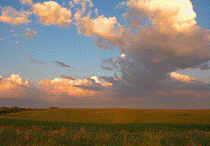North American Prairie Conference
Date of this Version
2004
Document Type
Article
Abstract
Prescribed burning every two or more years is the recommended management practice to remove unnecessary invasive plants and to enhance the regrowth of desirable plants for the development of a fire-dependent plant community native to southwestern Louisiana. A portion of Saint Augustine grass lawn at Louisiana State University at Eunice (LSUE) was converted into a Cajun Prairie restoration plot in 1989. Since 1991, the adjacent lawn has been clipped weekly, whereas the prairie has been burned every January. The objective of this study was to determine the soil chemical properties of clipped lawn and burned prairie plots. Each plot (12 m x 104 m) had four blocks (replications). Soil samples from the 0-10 cm depth were taken from each block for each plot in December 2002, March 2003, and June 2003. They were analyzed in the laboratory for soil chemical properties: pH, organic carbon (OC), electrical conductivity (EC) as a measure of soluble salts, phosphorus (P), potassium (K), calcium (Ca), magnesium (Mg), sodium (Na), iron (Fe), zinc (Zn) and copper (Cu). Extractable soil P, Ca, Mg and Na were significantly greater in the burned prairie than in the clipped lawn. In the burned prairie from December to June, Fe increased, whereas pH, EC, P, K, Na, Cu, and Zn decreased. The results suggest that the annually burned restored Cajun Prairie provided greater nutrient deposition into the soil than the clipped Saint Augustine lawn.


Comments
Published in Dave Egan & John A. Harrington, editors, Proceedings of the 19th North American Prairie Conference: The Conservation Legacy Lives On..., University of Wisconsin-Madison, August 8-12, 2004 (Proceedings of the North American Prairie Conference, 19), Madison, WI: University of Wisconsin-Madison, 2004.